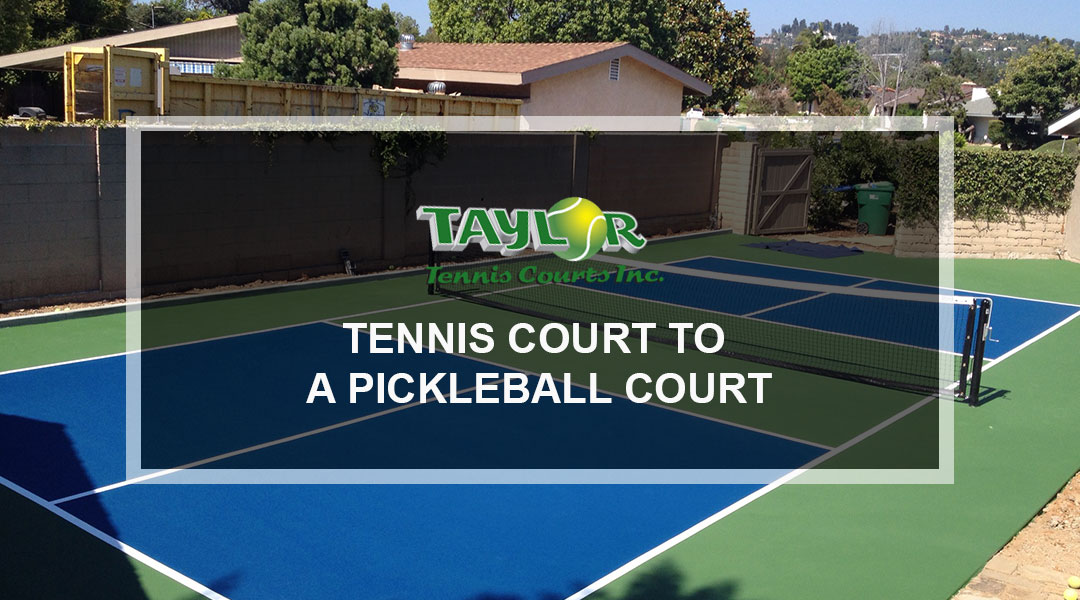Pickleball Court Construction-- Begin Building Your Perfect Court Today
Pickleball Court Construction-- Begin Building Your Perfect Court Today
Blog Article
Lasting Practices in Pickleball Court Building You Need To Know
As the popularity of pickleball remains to climb, so also does the demand for lasting techniques in court building and construction. This technique not only addresses environmental worries however additionally improves the longevity and capability of the courts. From choosing green products to executing efficient drain and energy-saving illumination options, there are countless methods to consider. The impact of these techniques prolongs much beyond the court itself. Comprehending exactly how each element contributes to a more sustainable future invites better expedition into the intricate balance between entertainment development and environmental stewardship.
Choosing Eco-Friendly Materials
Choosing green materials is an essential step in the construction of sustainable pickleball courts. The selection of lasting materials not only minimizes environmental influence but likewise enhances the durability and performance of the court. Trick materials include reused rubber for the surface, which supplies excellent longevity and shock absorption while diverting waste from land fills.
Additionally, using in your area sourced materials reduces transport emissions and supports local economies. Pickleball court construction. Utilizing native hardwoods for secure fencing and seating can supply a sustainable visual while guaranteeing strength versus the components.
Including absorptive materials for court structures can additionally add to sustainability by permitting natural water drainage and decreasing overflow. These options not just secure neighborhood ecological communities yet also promote healthier play settings.
Reliable Drain Solutions
While the selection of eco-friendly products is essential, applying efficient drain services is similarly vital for preserving sustainable pickleball courts. Appropriate drainage not only secures the court surface area from water damages yet additionally minimizes erosion and runoff, promoting ecological honesty.
Effective drainage systems can consist of absorptive paving, which permits water to penetrate the ground instead of pooling externally. This reduces the probability of standing water, which can cause mold and mildew and other maintenance issues. Additionally, incorporating strategically positioned water drainage networks and swales can guide excess water away from the court area, ensuring a completely dry playing surface area and preventing dirt erosion.
Utilizing indigenous plant life in the landscape design around the courts can further boost drain by taking in excess water and decreasing overflow. These plants require less irrigation and advertise biodiversity, straightening with lasting methods.
Furthermore, it is important to on a regular basis preserve the drainage system to guarantee its long-lasting performance. This consists of cleaning particles and surveillance for obstructions. By focusing on effective water drainage options, pickleball court constructors can dramatically add to the sustainability and long life of the facility, eventually profiting both players and the atmosphere.
Energy-Efficient Lights Options
As the demand for pickleball remains to expand, integrating energy-efficient lighting choices right into court layout has become significantly vital for sustainability. Standard lights systems typically eat excessive power, adding to higher operational expenses and environmental impact. As a result, taking on modern, energy-efficient modern technologies is essential for both new constructions and remodellings.
LED (Light Emitting Diode) illumination stands out as a premier choice due image source to its long life and energy cost savings (Pickleball court construction). Contrasted to traditional lights, LEDs use about 75% much less energy and can last approximately 25 times longer, dramatically decreasing maintenance expenses. The directional nature of LED illumination minimizes light air pollution, ensuring that illumination is concentrated on the court instead than surrounding locations.

Lasting Surface Alternatives
Checking out lasting surface options for pickleball courts has obtained grip among gamers and home builders alike. The focus on green materials not only aligns with the growing environmental recognition yet additionally enhances the performance and sturdiness of the courts.
This product gives exceptional shock absorption, minimizing the risk of injuries for gamers while promoting sustainability. These ceramic tiles are easy to change and install, and their convenience permits for different court configurations.
All-natural grass courts are likewise becoming a sustainable selection, promoting biodiversity and minimizing the heat island result. They need normal upkeep and water, which might not straighten with all sustainability objectives.

Water Conservation Methods

One more effective strategy entails the setup of rain harvesting systems. These systems gather and save rain for use in preserving court surfaces and landscape design. This strategy not just saves potable water but additionally lowers reliance on community sources.
Moreover, utilizing drought-resistant landscaping around the courts is crucial. Native plants need less water and are better adapted to neighborhood environment conditions, therefore decreasing total water consumption. In addition, using effective watering systems, such as drip watering, ensures that water is delivered straight to plant origins, lessening dissipation and waste.
Conclusion
Including lasting techniques in pickleball court building considerably adds to ecological preservation and resource performance. By prioritizing these methods, the construction of pickleball courts can line up with wider ecological goals while promoting long life and capability within communities.
As the popularity of pickleball continues to increase, so as well does the requirement for lasting practices in court building.Picking eco-friendly materials is an important Full Article step in the building of lasting pickleball courts. By focusing on energy-efficient lights alternatives, pickleball court erectors can add to a more sustainable future while meeting the requirements of stakeholders and players alike.Incorporating lasting surface options not only enhances the performance of pickleball courts but likewise paves the means for implementing effective water conservation strategies.Integrating sustainable techniques in pickleball court building substantially contributes to environmental conservation and source efficiency.
Report this page